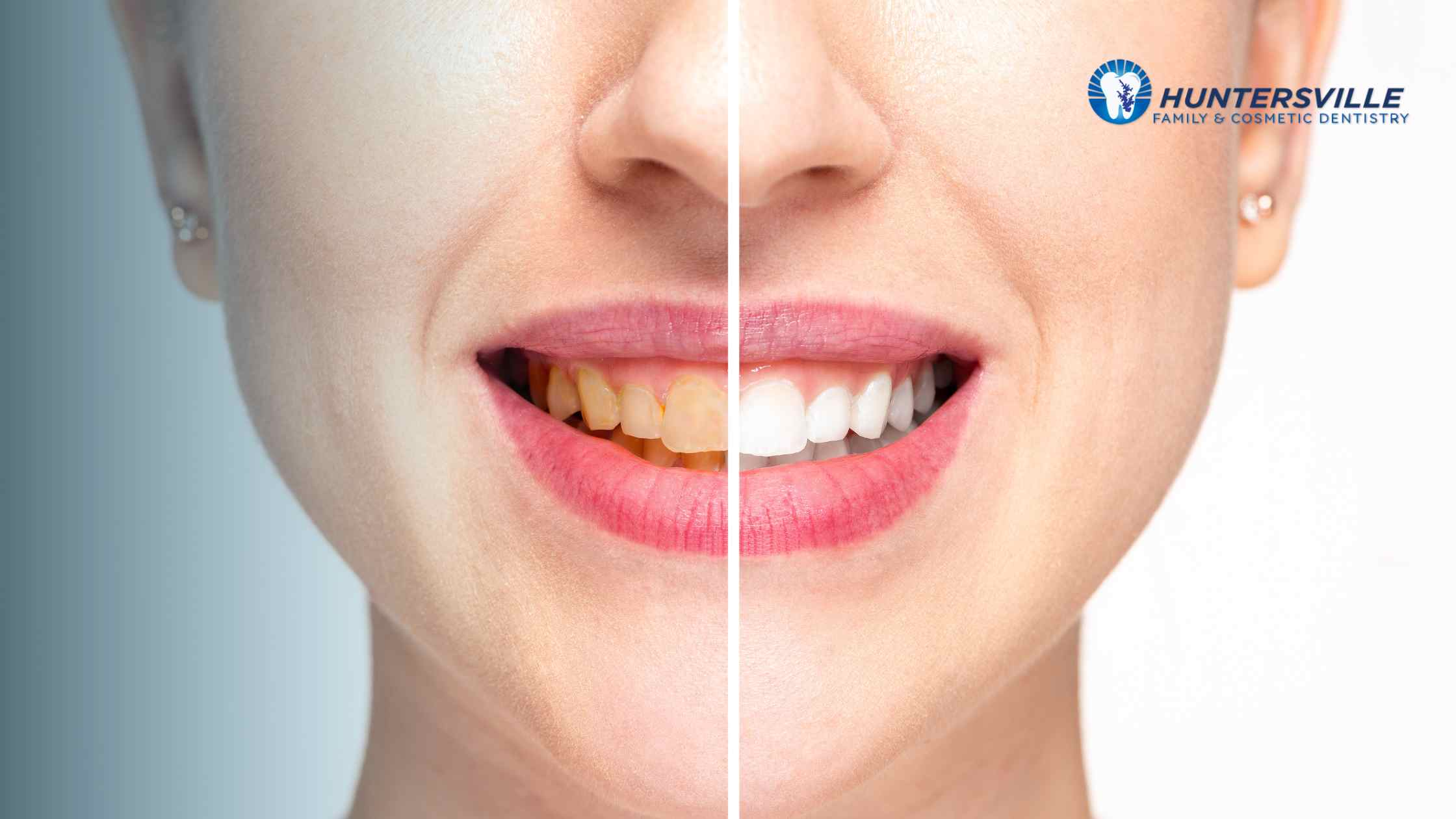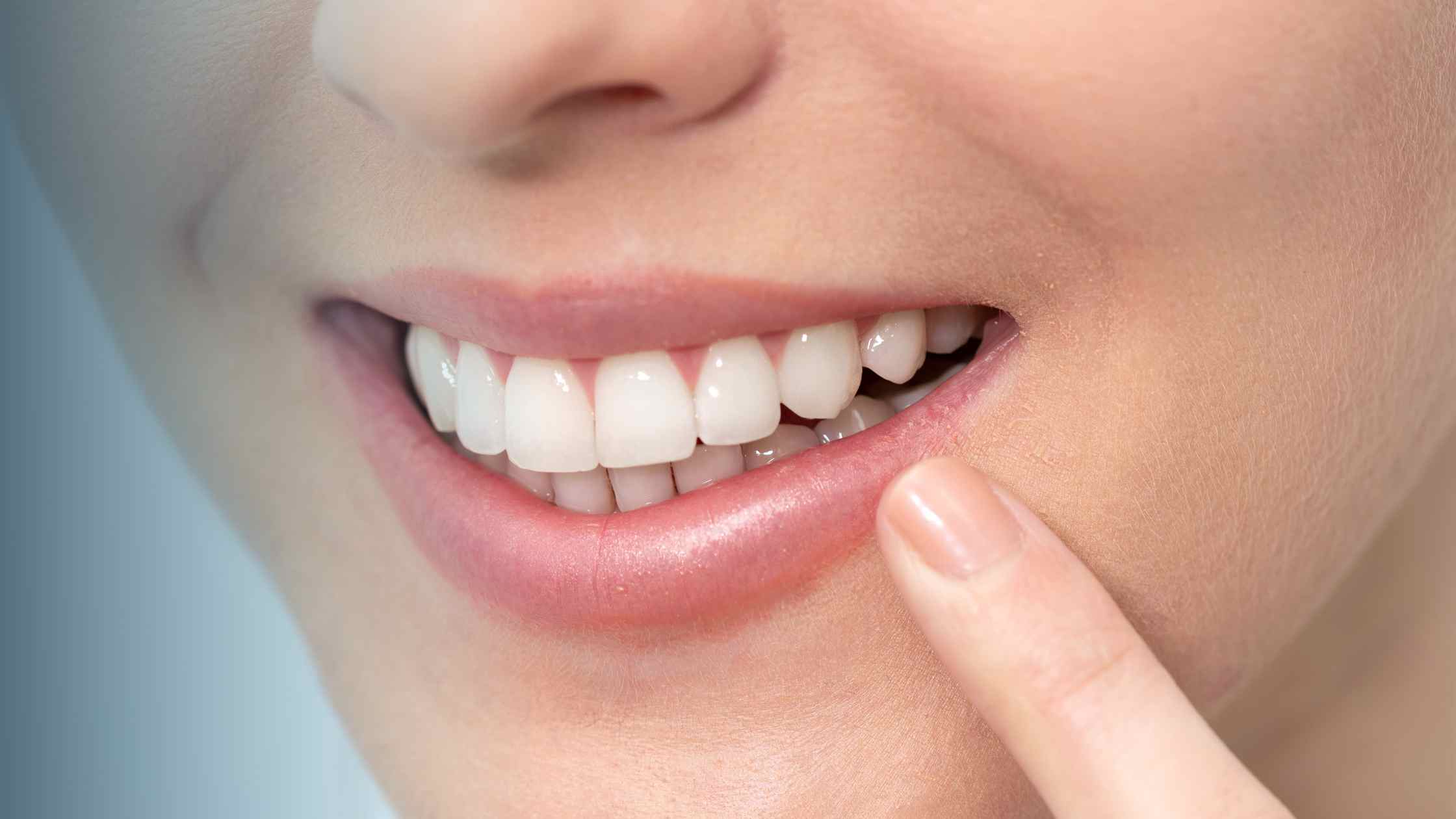
Preventative Care & Treatments By General Dentist
Adhering to an oral care routine that is centered around oral disease prevention is an important aspect of maintaining overall health. For this reason, the providers at our Huntersville NC dentist office encourage patients to include in their oral care routine regular dental checkups and cleanings twice per year.
Reducing The Risk For The Most Common Oral Diseases
With preventative care being the basis for biannual dental health appointments, the top tasks for our dental service provider will be a treatment for plaque and/or tartar removal. This treatment is a priority since plaque film and/or tartar is the reason why 80% of Americans suffer from oral diseases today.
Besides plaque and tartar removal, our providers may recommend other dental treatments to protect your teeth. Treatment may include fluoride to strengthen the teeth’s enamel or sealants that act as a barrier protecting teeth from germs and food.
Article Overview
Now that you have a better understanding of why preventative care appointments are important. Let’s discuss (1) 3 of the most common conditions these visits help you avoid and (2) 4 of the treatments general dentists perform to treat these 3 conditions.
3 Common Dental Conditions Treated By General Dentists
During your dental checkup appointment, the dentist at our Huntersville Family & Cosmetic Dentistry practice takes care to examine your teeth and mouth for signs of the 3 most common dental problems; cavities, gum disease, and oral cancer. Identified by the Center For Disease Control and Prevention as the most common disease impacting oral health, with the majority of people in the US experiencing at least one of these conditions by the age of 34. Read more about the methods general dentists use to identify and treat these conditions.
To Identify Cavities
Considered to be one of the greatest unmet health treatment needs in the US, dental cavities (dental caries) have likely plagued us all at some point or another in our life. This dental condition is experienced by children often and amongst adults “aged 20 and older, about 90% have had at least one cavity”.
Dental cavities aren’t always easy to spot with the naked eye. Therefore, our practitioners may need to use special tools and lighting to see the small holes in the teeth. These holes are caused by a lack of minerals in the mouth and can be the reason why you experience sensitivity, toothache, and even pain when chewing or biting.
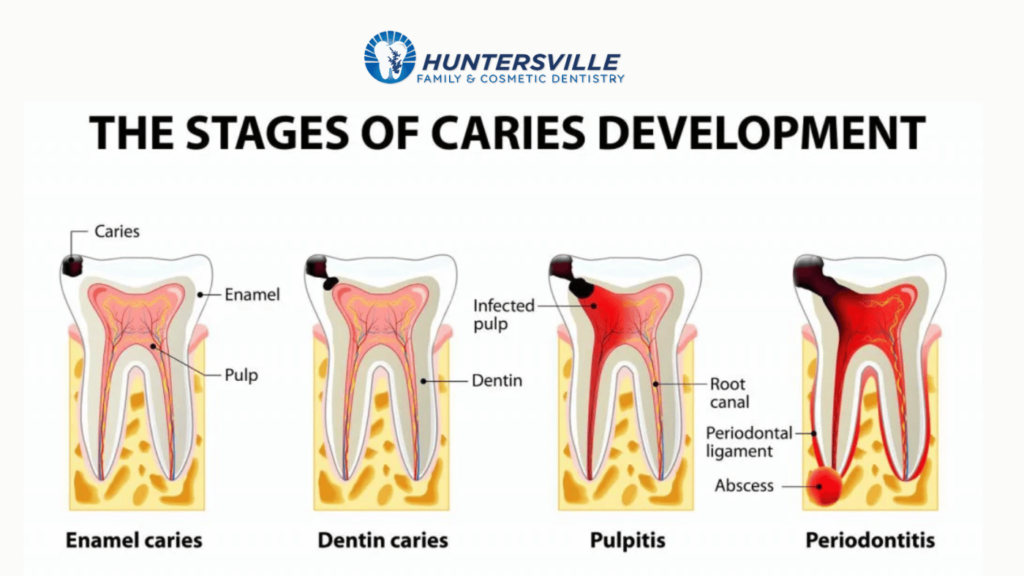
Dental cavities are most commonly associated with poor nutrition and limited access to fluoridated water. They can also be caused by factors such as smoking, acidic diets, and lack of oral hygiene.
While dental cavities are not necessarily harmful, they can cause discomfort and affect how well the teeth function. They can lead to problems such as tooth decay, gum disease, and premature tooth loss if left untreated.
In-Office Treatment For Cavities (Tooth Decay)
Typically, in-office treatment can be completed in one day. In order to justify the need for treatment of a cavity, our providers look for several signs and symptoms using any or all of the inspection methods listed below:
- Doing a visual inspection: Using a dental mirror and special lights we will look for visible signs of decay on the surfaces of the teeth, such as discoloration, stains, pits, tiny holes, or indentations.
- Using a dental probe: Using a small dental instrument called a probe will allow us to check the texture of the tooth surface for soft spots. These soft spots are a clear indication of the presence of decay.
- Ordering An X-ray: With the assistance of our support staff, we may take X-rays to look for cavities that are not visible to the naked eye, such as those between the teeth or under the gumline.
- Incorporating Laser fluorescence: In some cases, we may incorporate the use of a special laser device that can detect changes in tooth density caused by cavities.
These are some of the methods used to detect a cavity.
Larger cavities that have progressed to the root of the tooth are treated differently. For these, root canal therapy may be necessary.
To Identify Gum Disease
Also known as periodontal disease, this condition is much more prevalent in the population at a rate of 46% of adults over 30 years old. Gum disease is a medical condition in which the gum tissue becomes inflamed and infected. It can occur when the bacteria in the mouth produce certain types of acids, which damage the tissues. This can happen for several reasons, including poor oral hygiene, underlying health conditions, or certain medications.
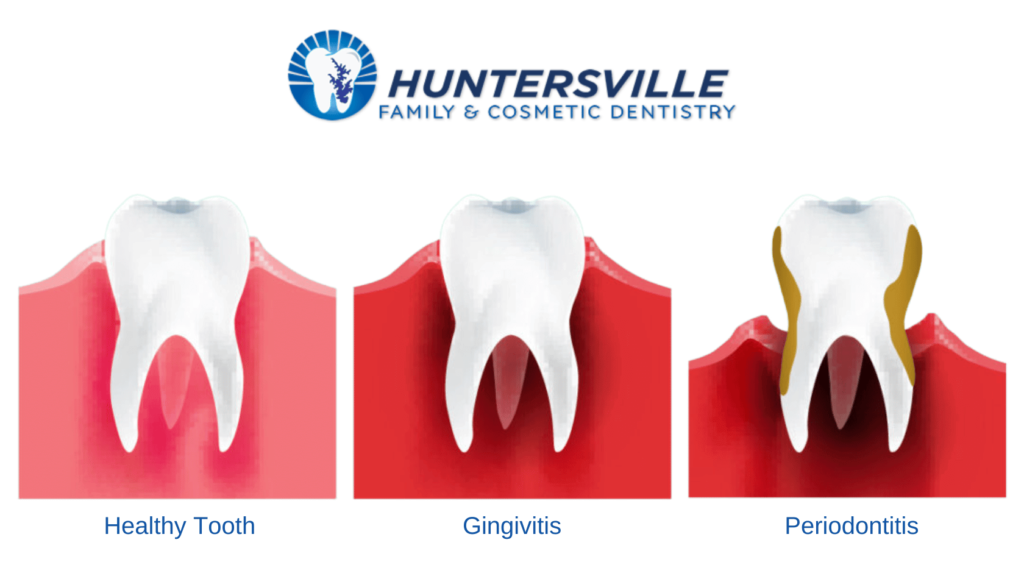
Gum disease can lead to tooth loss and other dental problems as well as issues with chewing and speaking. To identify, our providers will look for the following:
- Bleeding gums: One of the most common signs of gum disease is bleeding gums, particularly during brushing or flossing.
- Red or swollen gums: Healthy gums should be a pale pink color and firm to the touch. If your gums appear red, swollen, or puffy, this may be a sign of gum disease.
- Receding gums: If your gums are receding, or pulling away from your teeth, it may be a sign of gum disease. This can also make your teeth appear longer than normal.
- Pockets around teeth: As gum disease progresses, pockets or spaces can develop between the teeth and gums, creating a breeding ground for bacteria and increasing the risk of infection.
- Loose or shifting teeth: If your teeth feel loose or like they are shifting, this may be a sign of advanced gum disease that has caused damage to the supportive structures around the teeth.
- Changes in bite: Gum disease can cause changes in the way your teeth fit together when you bite or chew, which can cause discomfort or difficulty eating.
During an examination, our dentists may use a special probe to measure the depth of the pockets around your teeth. Taking X-rays allows us to check for bone loss or other signs of gum disease. We also check for signs of inflammation or infection.
If gum disease is detected, the dentist or periodontist may recommend treatment options such as scaling and root planing, antibiotics, or surgery, depending on the severity of the disease.
To Identify Oral Cancer
Oral cancer, also known as oropharyngeal cancer, is a type of cancer that affects any part of the oral cavity. Affected areas may include the lips, tongue, gums, salivary glands, and throat. To identify, our providers will use any or all of the inspection methods listed below:
- Visual examination: The dentist will use a light and mirror to examine the inside of your mouth, checking for any suspicious lumps or lesions.
- Palpation: The dentist will feel the soft tissues of your mouth with their hands, looking for any irregularities.
- X-ray: An X-ray can provide views of areas that cannot be seen during a visual exam.
- Biopsy: A biopsy involves removing a sample of tissue from the suspicious area and examining it under a microscope to identify cancerous cells.
- Blood tests: Blood tests can help to determine if there are any markers in the blood that could indicate cancer.
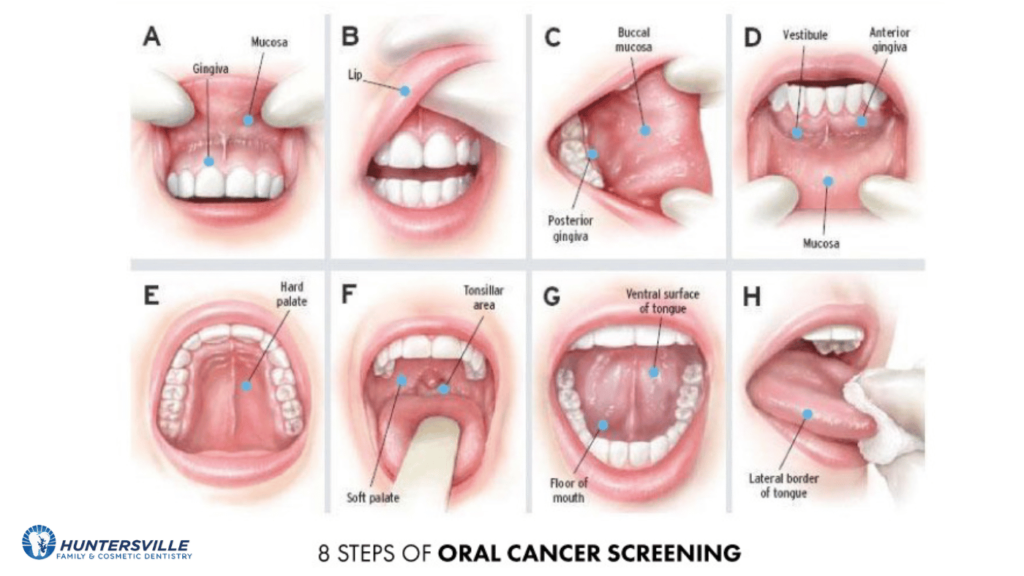
Oral cancers can be either malignant (cancerous) or benign (non-cancerous). These cancers can develop due to many different factors such as smoking, alcohol consumption, chewing tobacco, sun exposure, and certain viruses.
Symptoms of oral cancer include persistent lumps in the mouth or throat that do not go away on their own. Sores that last longer than two weeks may be present. Patients may also experience difficulty swallowing or speaking, pain in the jaw or neck area, and numbness of the lips.
With a preventative oral care routine and regular visits to the dentist, you can reduce your risk for these 3 diseases.
If you want to learn more about how general dentists can help treat cavities, gum disease, and oral cancer, read on to find out more.
Treating Oral Diseases At Our Huntersville NC Dentist Office
General dentists perform a variety of procedures, but these options are the most commonly used to treat cavities, gum disease, and oral cancer.
Treatment For Large and Small Cavities (Dental Caries)
Tooth Fillings: Fillings are used to treat cavities by removing the decayed part of the tooth and filling the space with a material such as composite resin. Here is what you can expect before, during, and after the procedure:
Before the Procedure:
The dentist will examine your teeth to determine the extent of the damage and which tooth requires filling. You may need to undergo an X-ray to check if the decay has reached the pulp, the innermost part of the tooth, which may require additional treatment.
During the Procedure:
Once the dentist has identified the tooth requiring filling, they may administer a local anesthetic to numb the area. The dentist will remove the decayed portion of the tooth and create space for the filling. Once the cavity has been cleaned and prepared, the dentist will fill the cavity with a filling material of your choice, such as composite resin, amalgam, or gold.
After the Procedure:
After the filling procedure, you may experience some discomfort, sensitivity, or pain. This is normal and should subside within a few hours. You should avoid eating or drinking anything hot or cold for a few hours as the filling material may still be sensitive. It’s also recommended to avoid chewing on hard or sticky foods for a few days after the procedure to give the filling time to set.
It’s essential to maintain good oral hygiene after the filling procedure to prevent any further damage or decay to the tooth. Brush your teeth twice a day with fluoride toothpaste, floss daily, and use an antiseptic mouthwash to maintain good oral hygiene.
When Tooth Filling Just Isn’t Enough
When examining teeth to determine the need for root canal therapy, dental providers look for several signs and symptoms. The most common symptom is a severe and persistent toothache. The pain associated with a severe toothache is often the first sign of a damaged or infected tooth.
Other indications are tooth sensitivity to hot or cold temperatures that lingers even after the source of the temperature is removed. Swelling in the gums or face near the affected tooth, discolored or darkened tooth may be present. Other indicators include the presence of pus or drainage in the gums or around the tooth. These are all signs and symptoms that may indicate the need for root canal therapy.
If our dentists determine that a tooth requires root canal therapy, they will typically perform the procedure to
- remove the infected or damaged pulp
- clean the tooth’s canals
- and seal the tooth to prevent further infection
Root Canal Therapy:
This is a dental procedure used to repair and save a damaged or infected tooth. The procedure involves removing the damaged pulp and nerve tissue inside the tooth. The provider cleans and disinfects the tooth’s interior, and then seals the tooth to prevent further damage or infection.
Here is what you can expect before, during, and after a root canal procedure:
Before the Procedure:
Before the procedure, the dentist will examine your teeth to determine if a root canal is necessary. You may need to undergo an X-ray to check the extent of the damage or infection. the dentist may also prescribe antibiotics to help manage the infection before the procedure.
During the Procedure:
During the root canal procedure, the dentist will numb the area around the tooth with a local anesthetic to prevent pain. Once the area is numb, the dentist will make a small opening in the top of the tooth to access the pulp and nerve tissue inside. They will then use small tools to remove the damaged tissue, clean and disinfect the tooth’s interior, and shape the canals to receive a filling material.
Once the canals are prepared, the dentist will fill them with a rubber-like material called gutta-percha to seal the tooth. The opening in the tooth will then be sealed with a temporary filling. You will be scheduled for a follow-up appointment to have a permanent filling or crown placed over the tooth to protect it from further damage.
After the Procedure:
After the root canal procedure, you may experience some pain or discomfort, which is normal. You should avoid chewing or biting down on the treated tooth until the permanent filling or crown is placed.
It’s essential to maintain good oral hygiene after the procedure to prevent any further damage or infection. Brush your teeth twice a day, floss daily, and use an antiseptic mouthwash to maintain good oral hygiene.
Treatment For Gum Disease
Scaling and root planing is a procedure used to treat gum disease. It involves removing the inflammation and dead tissue from the surface of the gums using a scalpel. Here is what you can expect before, during, and after treatment:
Before the Procedure:
Before the procedure, the dentist will review your medical history and perform a thorough examination of your gums and teeth. They may take X-rays or other imaging tests to better assess your oral health.
During the Procedure:
During the scaling and root planing procedure, the dentist will use special instruments to gently remove plaque, tartar, and bacteria. Once the scaling has been completed, they will smooth out any rough spots on the roots of your teeth.
After the Procedure:
The dentist may place a protective dressing over the treated area. You may experience some mild discomfort and sensitivity after the treatment, but this should subside within a few days. The dentist may also recommend additional treatments such as antibiotics or antimicrobial rinses to help reduce inflammation in your gums. With regular checkups and good oral hygiene habits, you can maintain healthy gums and avoid gum disease in the future.
Several factors may influence whether scaling and root planing is recommended or not. The degree of gum disease and its severity as well as your overall health condition are important factors to consider. If you have underlying medical conditions, we may recommend that you consult with your PCP before undergoing this procedure.
Treatment Options For Oral Cancer
One of the most common treatments for oral cancer is surgery. This involves removing abnormal tissue or tumors from the mouth. In some cases, doctors may also remove parts of the jaw or facial bones.
Radiation therapy uses high-energy rays to kill off any remaining cancer cells. This can be used in combination with other treatments, such as chemotherapy, if necessary. Chemotherapy drugs are given to patients to help fight against the disease.
Practitioners work hard to treat oral cancers effectively and safely to ensure optimal health outcomes for their patients. Yet, patients also have a personal responsibility to care for their oral health. Take steps to maintain good oral health by practicing proper dental care and visiting the dentist regularly. By doing so, they can help prevent this life-threatening disease from occurring in their mouths.
Improving Overall Health Through Early Detection & Treatment
Suffering from oral diseases can lead to the buildup of harmful bacteria in the mouth. These conditions can cause inflammation and infections that spread to other parts of the body. This is possible by way of the bloodstream, leading to systemic health problems. Early detection and treatment for these and other oral health conditions decrease the risk of the following health diseases:
Heart disease: Studies have shown that people with gum disease are at an increased risk of developing heart disease. Oral bacteria from gum disease enter the bloodstream attaching to fatty deposits in the heart’s blood vessels. This leads to blockages and potential heart attacks or strokes.
Diabetes: People with diabetes are more prone to developing gum disease. The disease makes it harder to control blood sugar levels. Inflammation also makes it difficult for the body to use insulin effectively.
Stroke: An increased risk of stroke has also been linked to gum disease. Gum disease bacteria enter the bloodstream causing inflammation in the brain that contributes to stroke.
Poor oral hygiene is linked to other systemic health issues. This includes respiratory infections, dementia, and pregnancy complications.
The American Dental Association recommends visiting the dentist at least twice a year for a checkup and cleaning. Some individuals need more frequent dental visits depending on their oral health. These visits are crucial for preventing further dental issues and maintaining good oral hygiene.
Follow ADA recommendations, visit the dentist regularly, and avoid costly dental problems. Learn more about us, your preferred Cosmetic, General, and Family Dentist In Huntersville NC.
Search Our Site
Meet Our Family & Cosmetic Dentists in Huntersville, NC
If you are looking for a dentist in Huntersville, NC, you have come to the right place. We are ready to help you get started on the path to improving your family’s oral health. Our combined experience and gentle care provide each member of your family the attention they deserve.
Do You Need An Appointment?
Recent Posts
Are $20K Smile Makeovers Worth It?
$20K Smile Makeovers: Are They Really Worth the Investment? Thinking about a $20,000 [...]
Can Yellow Teeth Be White Again?
Can Yellow Teeth Be White Again? It’s a question many people ask themselves [...]
Are Dentures Uncomfortable and Damaging to Your Mouth?
Are Dentures Uncomfortable and Damaging to Your Mouth? What You Need to Know [...]
Why Are Kids Getting More Dental Problems These Days?
Why Are Kids Getting More Dental Problems These Days? Causes and Solutions You [...]




